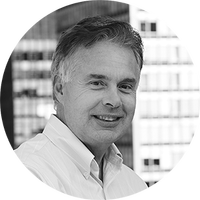The Supreme Court's two tribes
A steady stream of bitterly divided, 5-4 rulings is not what the Founders had in mind


Shortly after John Roberts became chief justice of the U.S. Supreme Court, he admitted concern that a steady stream of 5-4 decisions could undermine the court's "credibility and legitimacy as an institution." His fear was well-founded. Since then, the Roberts court has issued bitterly polarized, 5-4 rulings on its most controversial cases — including gun control, voting rights, affirmative action, campaign finance law, ObamaCare, and gay marriage. Justices in the losing faction, which swings from liberal to conservative depending on one swing vote, now routinely ridicule the reasoning of their colleagues — "legalistic argle bargle," in the memorable words of Antonin Scalia. This is not, one suspects, what the Founders envisioned when they created the court to arbitrate and help temper what Alexander Hamilton called the "ill humors in the society."
Those ill humors now permeate the high court. From 1801 to 1940, only 2 percent of its rulings came by 5-4 decisions. But in the Roberts years, 22 percent of cases have ended in such rulings, an all-time high. In oral arguments, the justices do little to disguise their tribal affiliations: The conservative, Catholic male justices recently expressed open sympathy for a Christian-owned company fighting the "contraception mandate," while the female liberal justices focused on women employees who might be denied contraceptive coverage. It sounded more like a debate on MSNBC or Fox News than a judicial proceeding. We humble citizens are thus left to wonder: Are the good justices dispassionately weighing each case on its constitutional merits, or are they mere ideologues who start off with a desired result and reason backward?
A free daily email with the biggest news stories of the day – and the best features from TheWeek.com
The Week
Escape your echo chamber. Get the facts behind the news, plus analysis from multiple perspectives.

Sign up for The Week's Free Newsletters
From our morning news briefing to a weekly Good News Newsletter, get the best of The Week delivered directly to your inbox.
From our morning news briefing to a weekly Good News Newsletter, get the best of The Week delivered directly to your inbox.
William Falk is editor-in-chief of The Week, and has held that role since the magazine's first issue in 2001. He has previously been a reporter, columnist, and editor at the Gannett Westchester Newspapers and at Newsday, where he was part of two reporting teams that won Pulitzer Prizes.
-
 Zimbabwe’s driving crisis
Zimbabwe’s driving crisisUnder the Radar Southern African nation is experiencing a ‘public health disaster’ with one of the highest road fatality rates in the world
-
 The Mint’s 250th anniversary coins face a whitewashing controversy
The Mint’s 250th anniversary coins face a whitewashing controversyThe Explainer The designs omitted several notable moments for civil rights and women’s rights
-
 ‘If regulators nix the rail merger, supply chain inefficiency will persist’
‘If regulators nix the rail merger, supply chain inefficiency will persist’Instant Opinion Opinion, comment and editorials of the day
